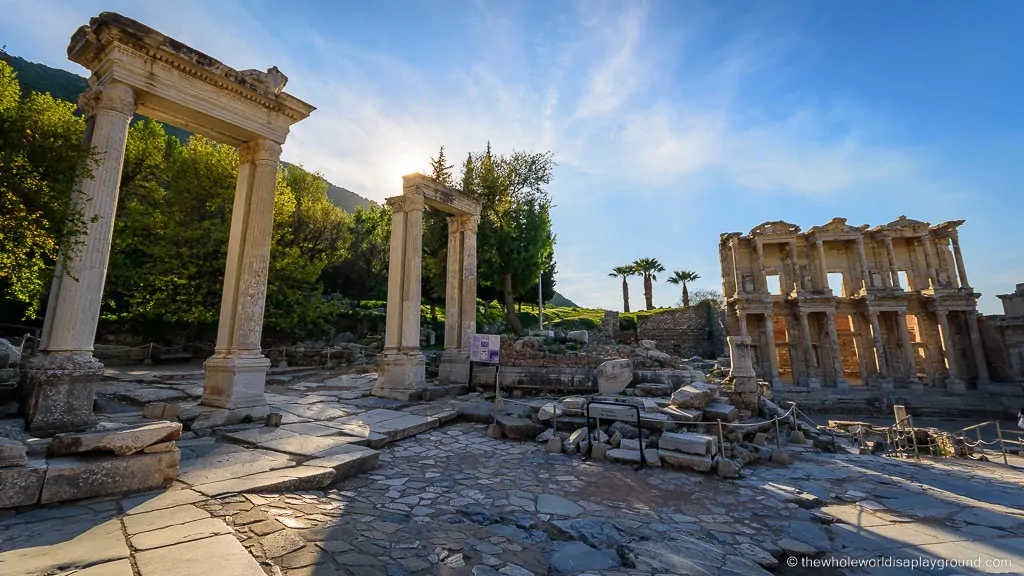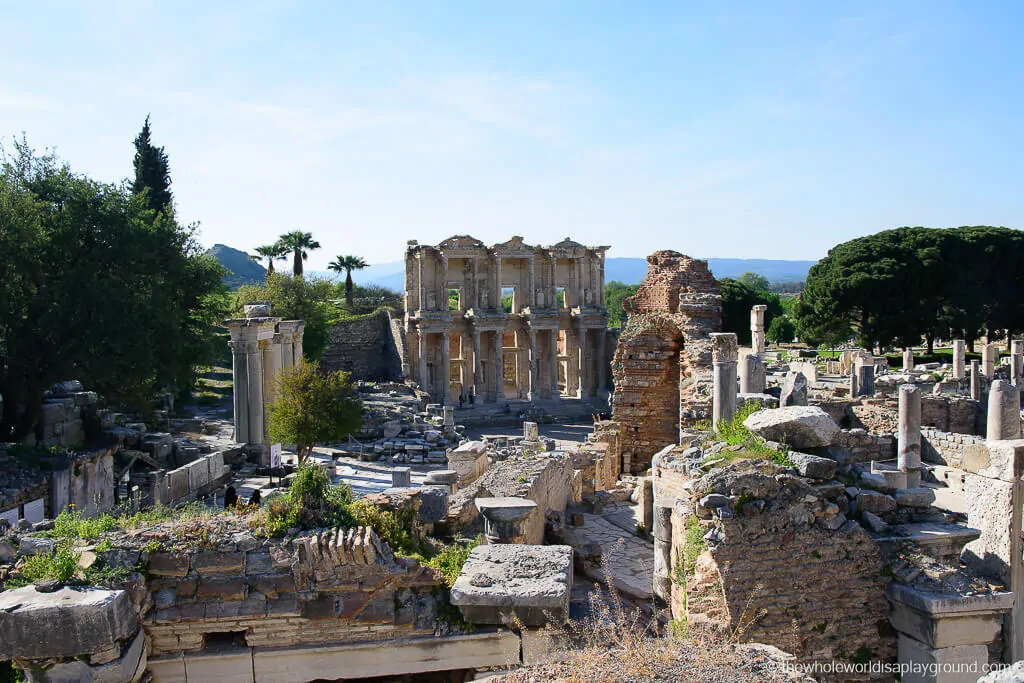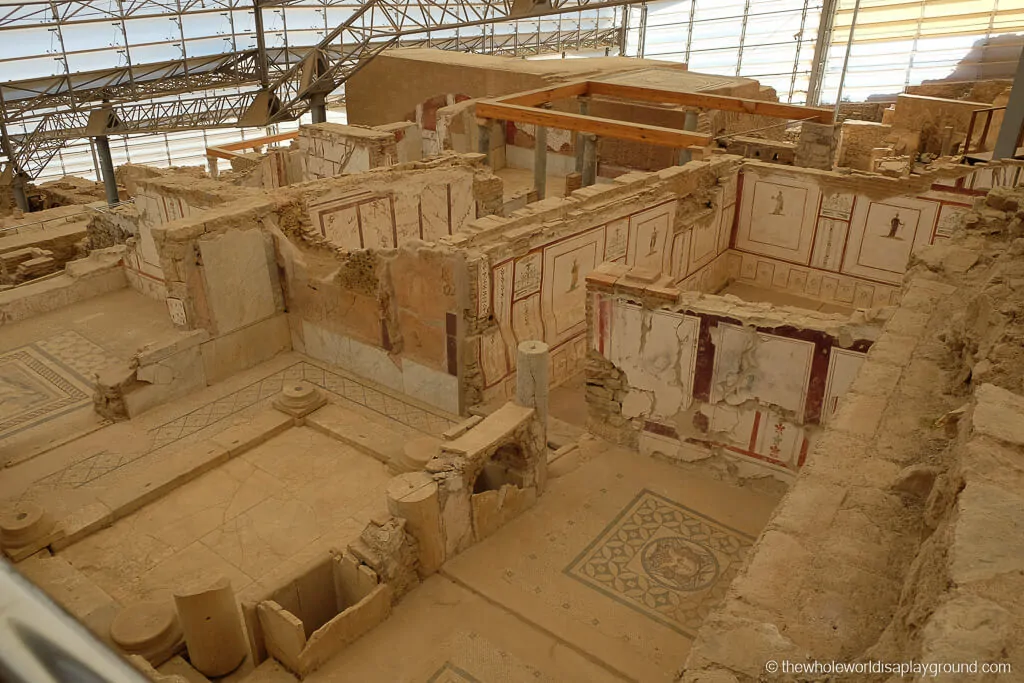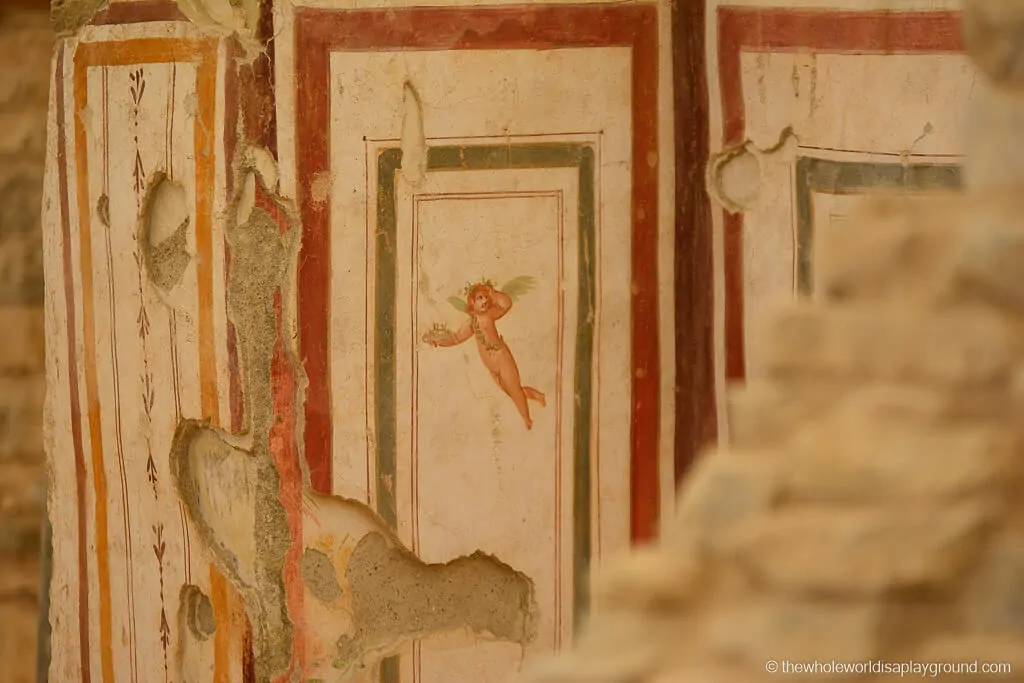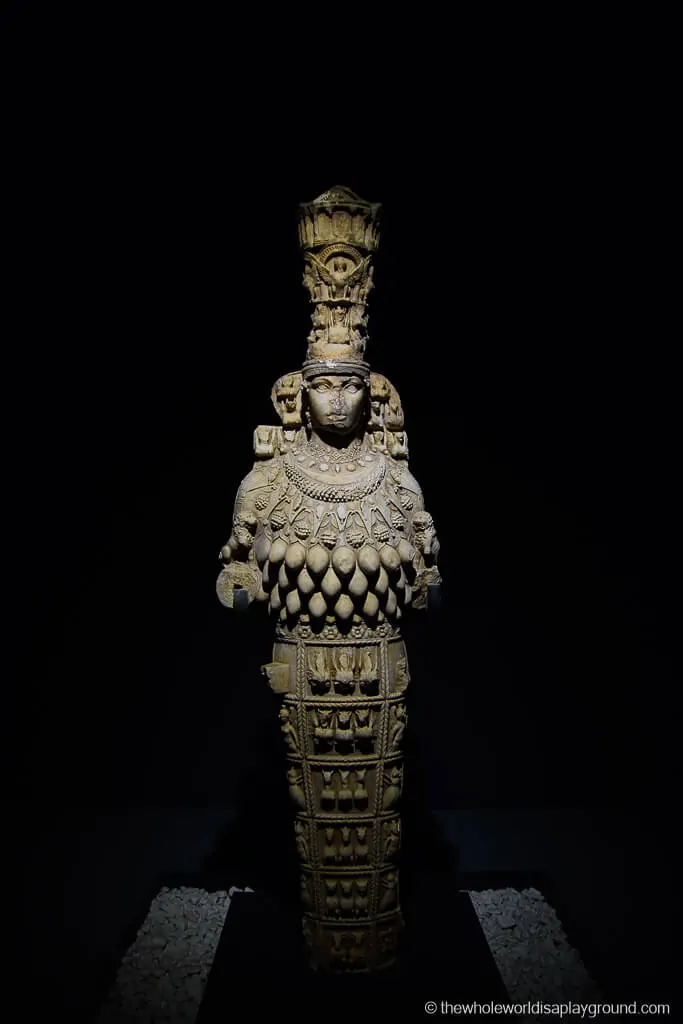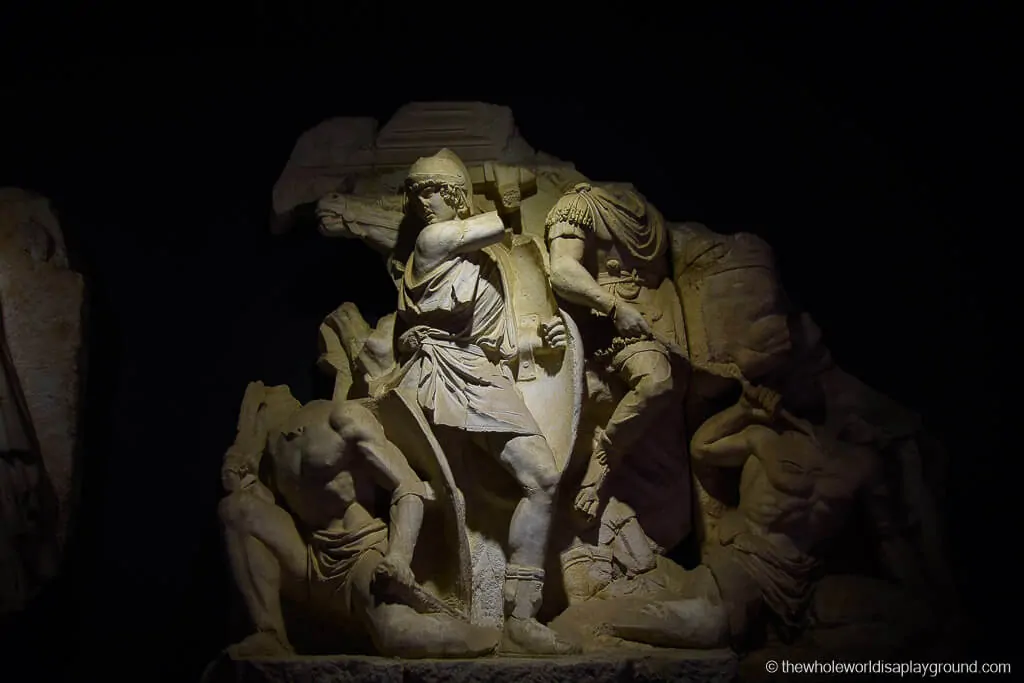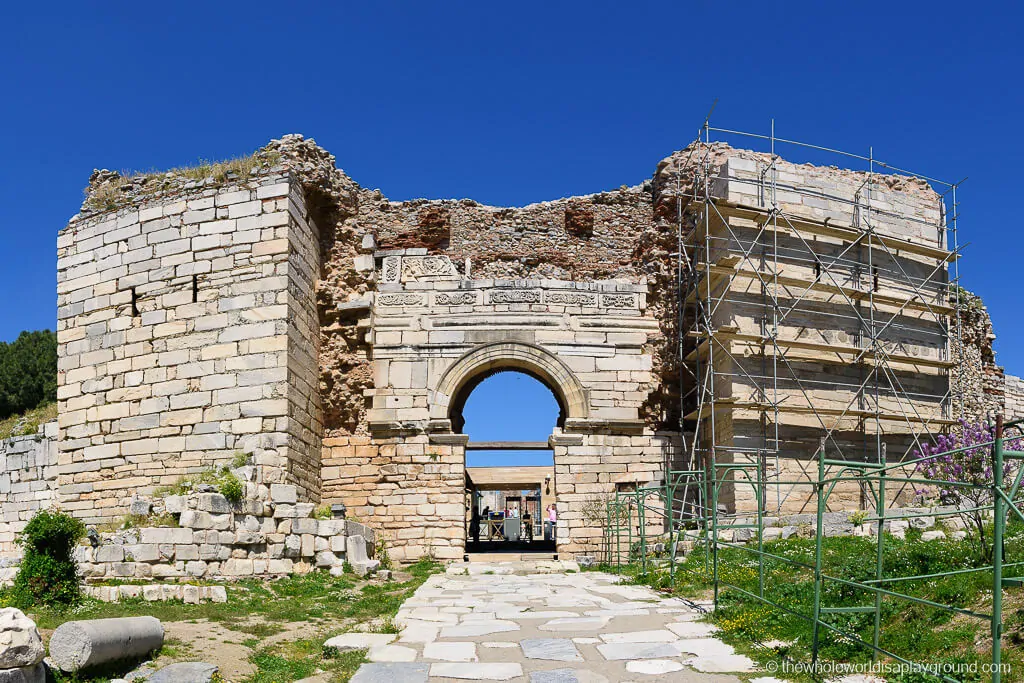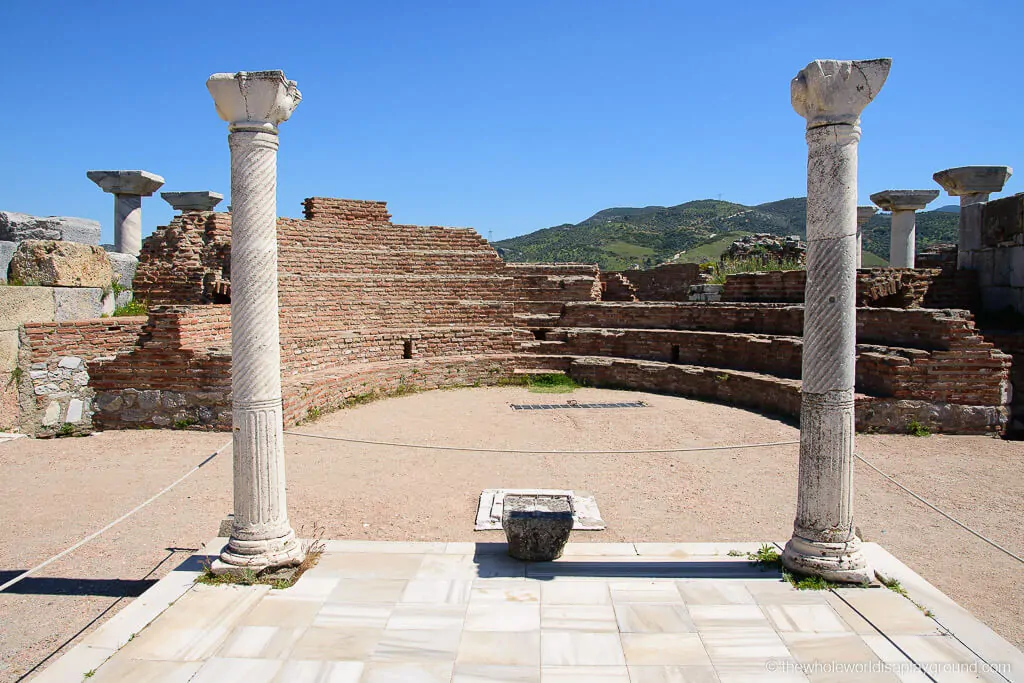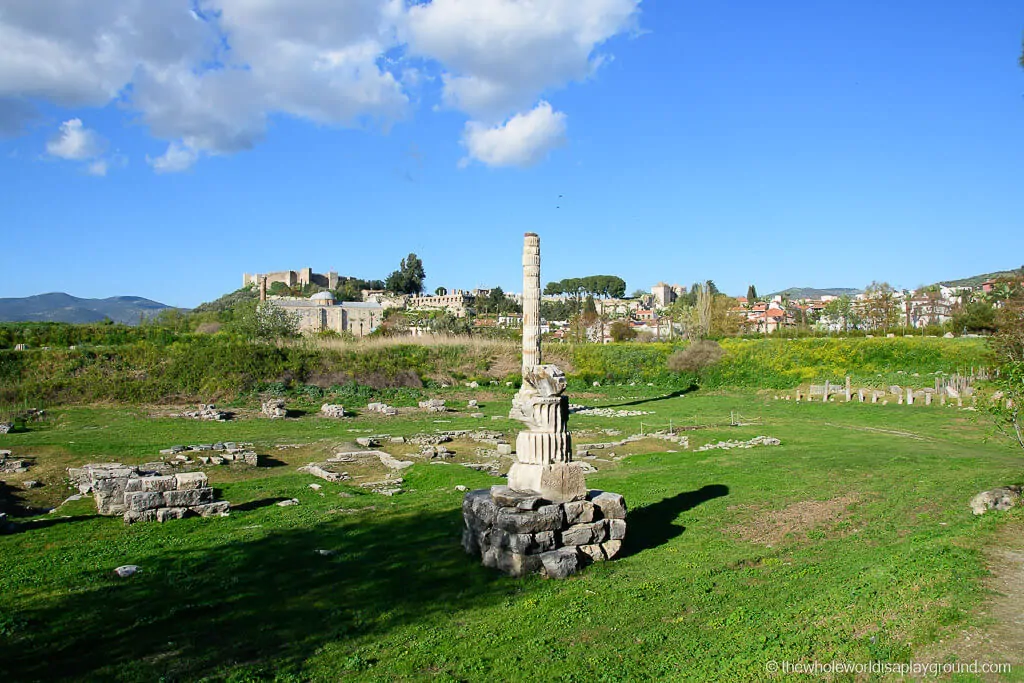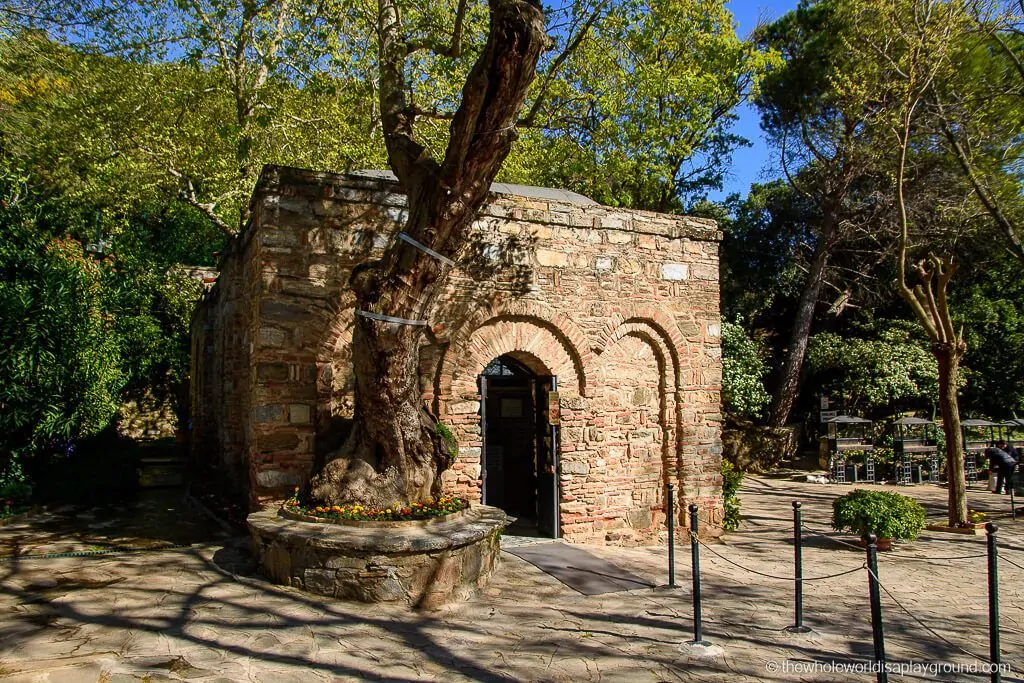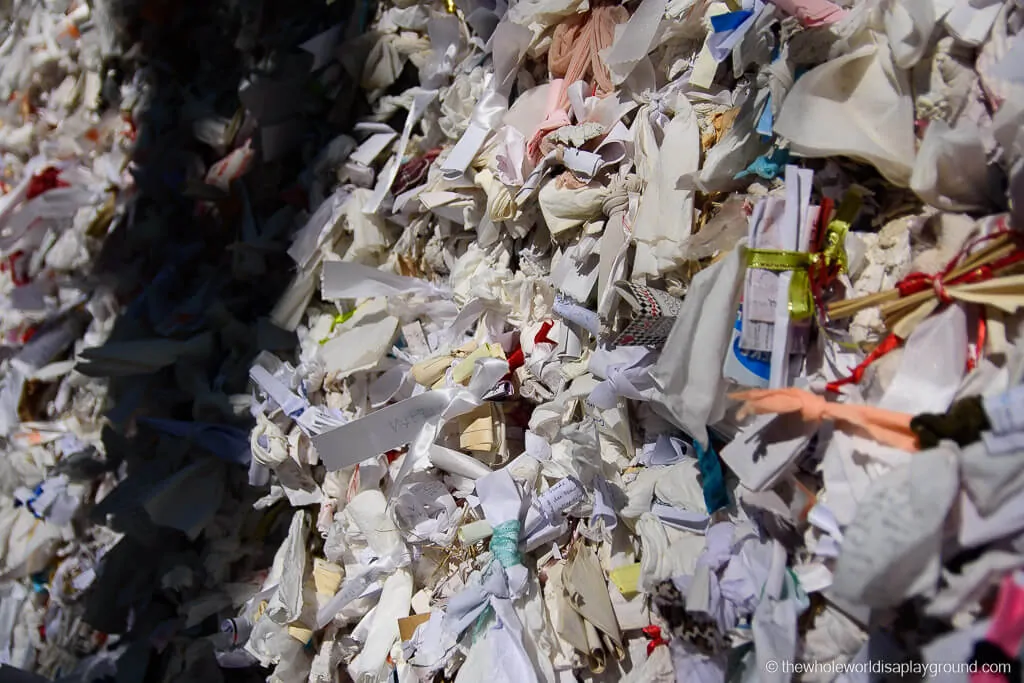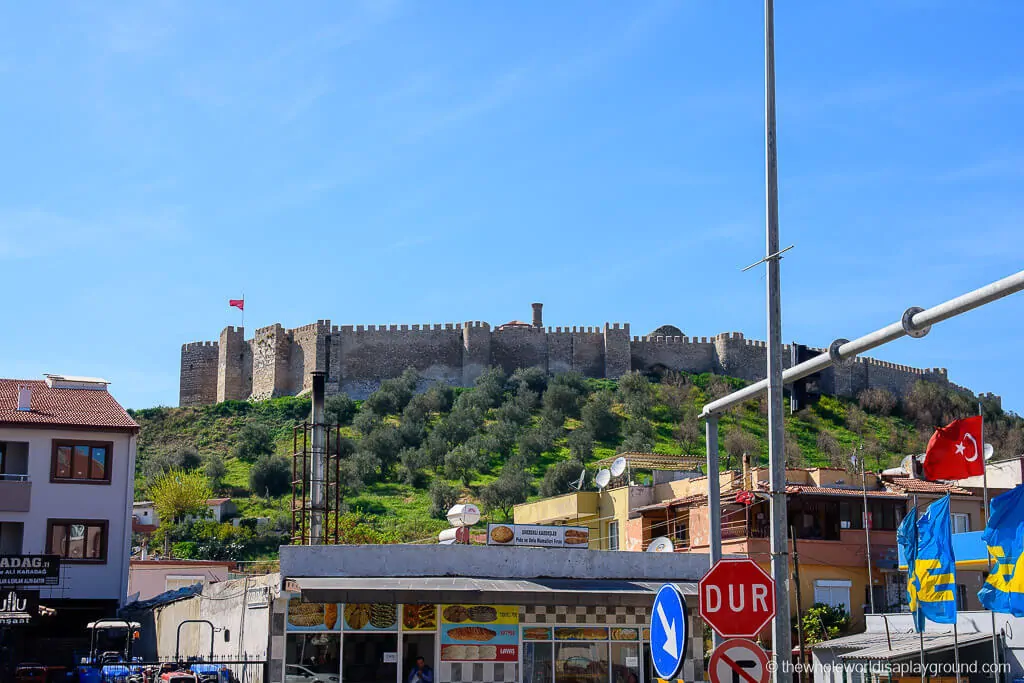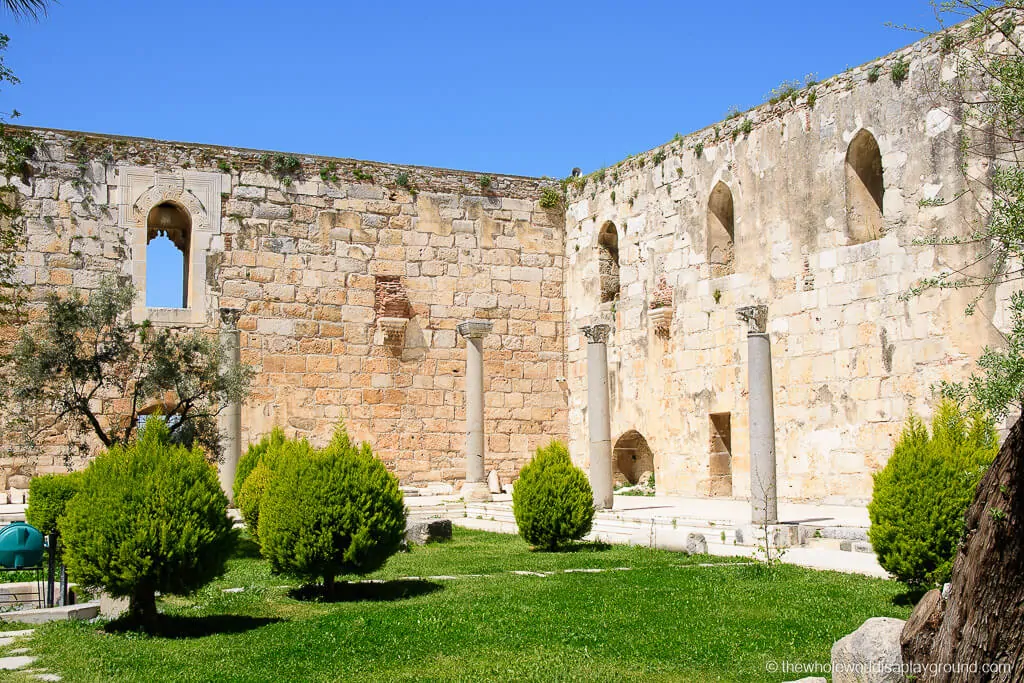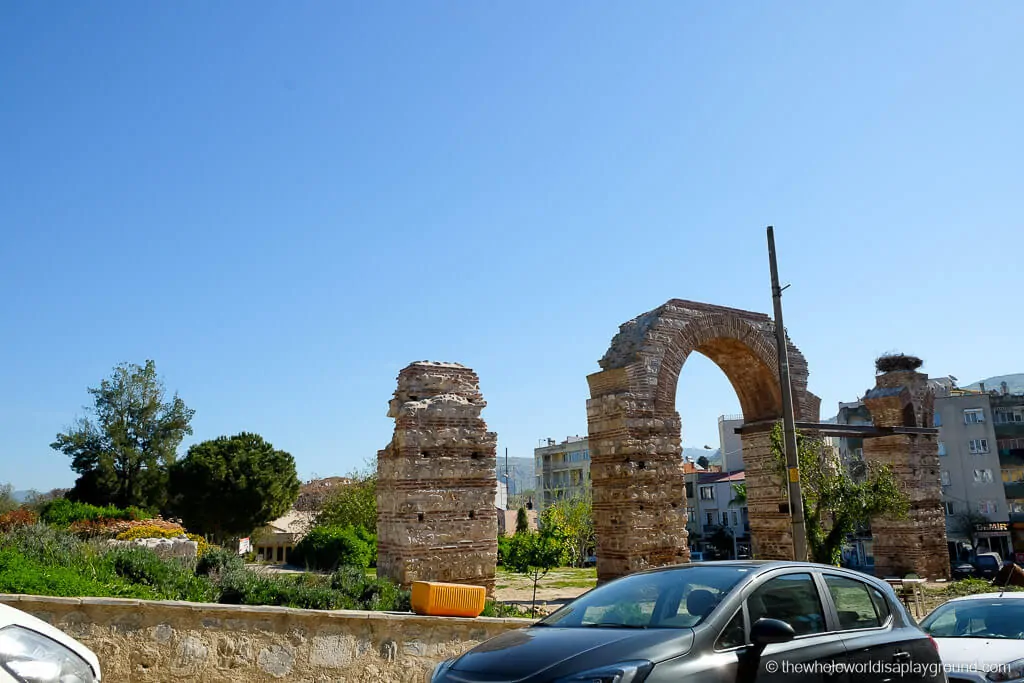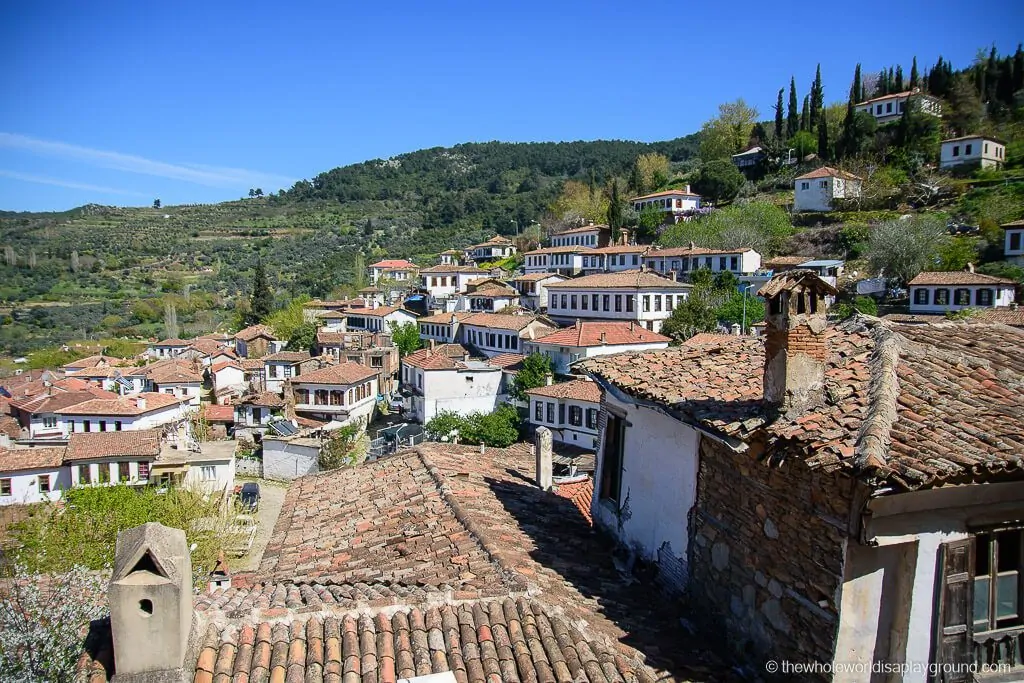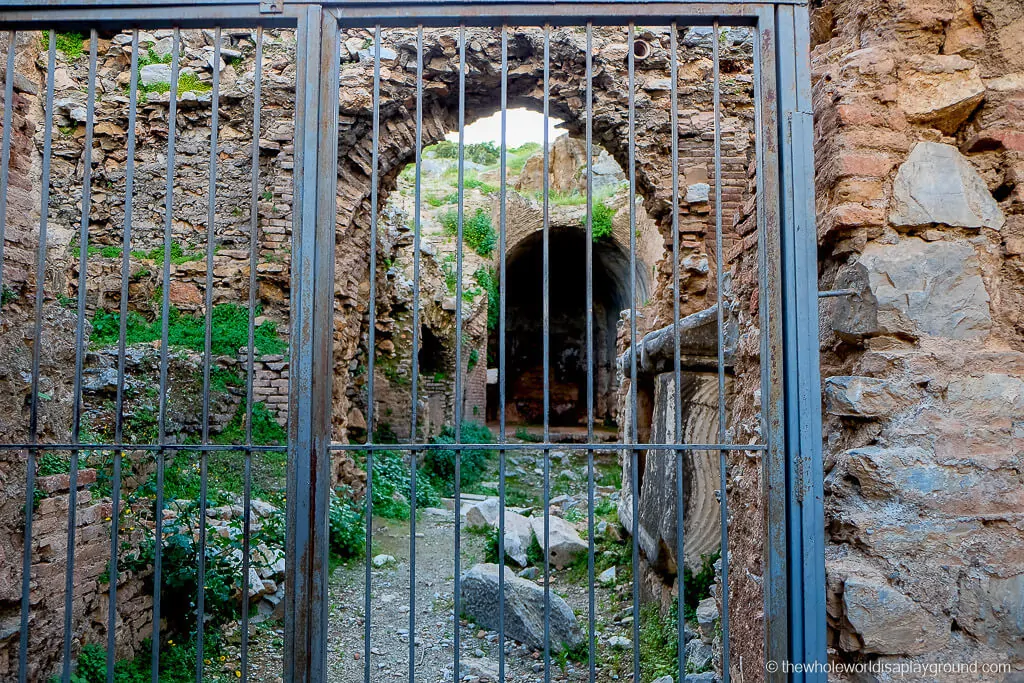The ancient Greek city of Ephesus in the town of Selcuk attracts over one million visitors per year and is one of the most popular sites in Turkey. Although many day trippers focus on the ancient city, there’s plenty of amazing things to do in Selcuk and it’s definitely worth spending time exploring Ephesus and Selcuk. To help with your planning we’ve put together our ultimate guide with the best things to do in Ephesus and Selcuk. Happy travels!
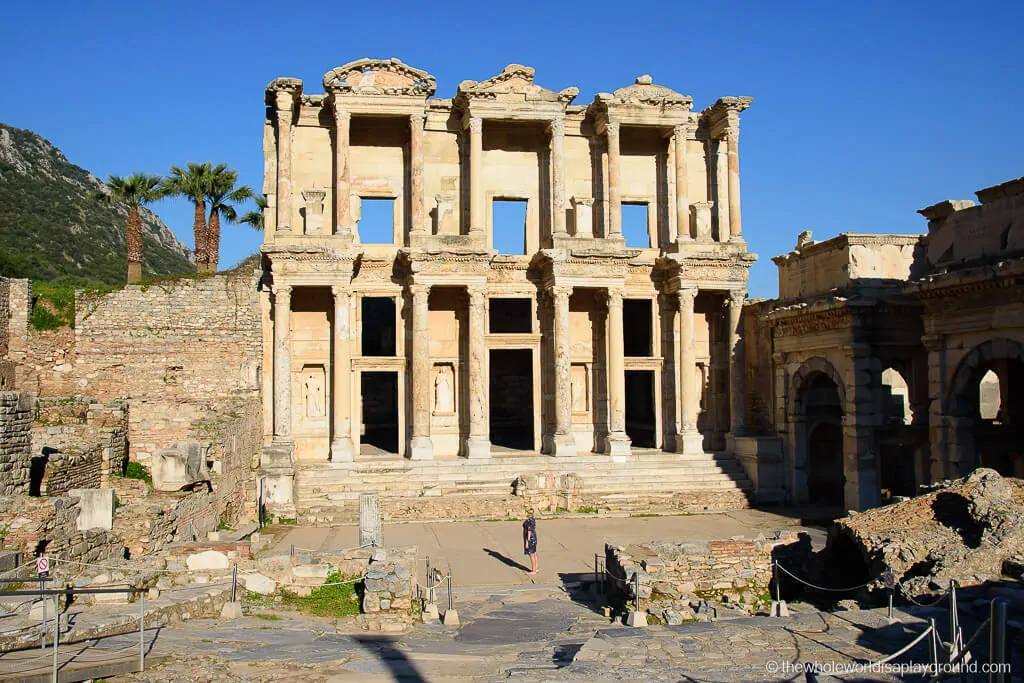
Things to do in Ephesus and Selcuk
While the ancient city of Ephesus itself is the main attraction there are quite a few other things to see and so in the area. We highly recommend that anyone planning a Turkey itinerary should include at least a few days in this historic area as there is so much to see.
1 | The Ancient city of Ephesus
Ephesus was one of the highlights of our trip to Turkey and one of the most impressive UNESCO World Heritage Sites in Turkey. The ancient Greek city of Ephesus was built in the 10th Century BC and was home to over 300,000 people at its peak. A succession of empires from Neolithic to Roman to Ottoman have ruled over Ephesus and the well-preserved ruins are one of the most incredible sights in Turkey.
The highlights of Ephesus are the magnificent Library of Celsus, built to store 12,000 scrolls and one of the most impressive buildings of the Roman Empire, the Great Theatre, the Terraced Houses and the Temple of Hadrian.
Things to do in Ephesus and Selcuk tip: go early or late to avoid the huge crowds and the midday sun. We visited at opening and made a beeline for the Library of Celsus where we spent an incredible 30 minute enjoying one of the most iconic sites in the world all by ourselves!
Where to stay in Ephesus
We recommend staying in Selcuk, the town in which the ancient ruins of Ephesus are located and home to the other must-see sights in Ephesus. Our two night stay allowed us to visit all the sights and also to visit the ancient ruins of Ephesus at open and close when it was much less busy.
- Hotel Mary’s House: family run hotel with handmade woodwork in bedrooms, a beautiful breakfast and a great location in the heart of Selcuk. We stayed here during our visit to Ephesus and loved it – check prices here!
- Cella Boutique Hotel and Spa: – luxury boutique hotel with outdoor pool, a spa and Turkish baths close to the centre of Selcuk – check prices here!
- Hotel Bella – another great boutique option with Ottoman style furniture and a rooftop restaurant with great views of the fortress – check prices here!
Click here to book an Ephesus hotel
Many visitors prefer to stay in Kusadasi and take a day trip to Ephesus – check prices here!
2 | The Terraced houses
Once luxurious residential villas, the terraced houses of Ephesus were known as the houses of the rich. The houses are presented as an indoor excavation site with a walkway leading visitors above the luxurious villas and their restoration is an ongoing project. The ruins of the house give an incredible glimpse of a privileged life in Roman times.
The mosaics and frescoes are handpainted and include animals and gladiators while names, poems and a price list of everyday items were among the most interesting graffiti. Although the excavation site of the terraced houses is located within the ancient city of Ephesus it requires a separate entry fee.
Things to do in Ephesus and Selcuk tip: if you are planning to visit a number of historical sites in Turkey it might be worth purchasing the Turkey Museum Pass. The pass is valid for 15 days, costs 210 Lira (around 50USD) and covers 300 museums and tourist areas affiliated to the Ministry of Culture and Tourism of the Republic of Turkey. The passes are sold at the ticket office of most historical sites – we used ours to enter Ephesus, the Ephesus Archaeological Museum, the Basilica of St John and the terraced houses. Mary’s House was excluded from the pass and required a separate entrance fee.
3 | Ephesus Archaeological Museum
The Ephesus Archaeological Museum exhibits artefacts that were excavated from the nearby ancient city of Ephesus. The artefacts include jewellery, coins, funeral relics and incredible statues. The highlight is the statue of Artemis and a visit to the museum really brings both the ancient ruins and the artefacts to life.
Things to do in Ephesus and Selcuk tip: we’d recommend visiting the archaeological museum after visiting the ancient site of Ephesus as then you can imagine the artefacts in their original locations.
4 | Basilica of St John
The once magnificent 6th Century Basilica is now in ruins having suffered at the hands of attackers, succumbed to pillaging and withstood earthquakes but its significance remains great. The Apostle John travelled from Jerusalem to Ephesus and is said to have spent his remaining years there with his tomb located under the Basilica marked by a marble slab at the site. It is believed that he wrote his gospel on Ayasuluk Hill upon which the Basilica is located and brought Mary, the Mother of Jesus to Ephesus. Although the church is in ruins it is still possible to visualise how the Basilica would have once stood and the views from the Basilica are stunning.
Things to do in Ephesus and Selcuk tip: Isa Bey mosque, St John’s Basilica and Ayasuluk Fortress are close together so combine a visit to the three.
5 | Temple of Artemis
The Temple of Artemis is one of the Seven Wonders of the Ancient World, a title bestowed on only the most incredible ancient constructions. Dedicated to the goddess Artemis, only a single column stands tall among the fragments of ruins that remain from the once magnificent temple. Despite the sparsity of the ruins it is incredible to stand in front of one of the seven wonders of the ancient world and a site with such significance.
6 | House of Mary, Meryemana
The house of the Virgin Mary is a pilgrimage site close to the ancient ruins of Ephesus and is considered to be the place where Mary, the Mother of Jesus, lived and died after being taken there by Saint John. The house is now a chapel and a side room is understood to have been where she slept. The site first came to prominence when a German nun, Anne Catherine Emmerich, had a vision and described the house in detail despite having never visited. Her visions were published in a book and, later, local historians and priests found a house which matched the descriptions in the book.
Pilgrims to the church leave their offerings on tissue tied to a wishing wall and sip from a water fountain said to have miraculous qualities for healing and fertility.
7 | Ayasuluk Fortress
Alongside St John’s Basilica and the Isa Bey Mosque the Ayasuluk Fortress sits atop Ayasoluk Hill and dominates the skyline of Selcuk. The fortress was built to protect St John’s Basilica and the ruins represent Byzantine, Seljuk and Ottoman periods. As well as the partially restored walls of the fortress there are remains of houses, a mosque, baths, a hammam and cisterns.
Things to do in Ephesus and Selcuk tip: Isa Bey Mosque, St John’s Basilica and Ayasuluk Fortress are located close to each other so combine a visit to the three.
8 | Isa Bey Mosque (Isa Bey Camii)
Located in the heart of Selcuk, the Isa Bey Mosque was constructed in the late 1300s and is based on the Great Mosque of Damascus. It is one of the finest examples of Seljukian architecture and is unique in that it was purposely built with an asymmetrical style. The mosque is now both a place of worship and a tourist attraction.
Things to do in Ephesus and Selcuk tip: The mosque is close to St John’s Basilica and Ayasuluk Fortress so combine a visit to the three. Visitors are required to cover up and hair scarves and long garments are available at the mosque
9 | Roman Aquaduct (The Aqueduct of Sextilius Pollio)
The ancient city of Ephesus boasted an advanced aqueduct system that supplied the city with water. The aqueduct is no longer intact, instead, standing as occasional archways which run through the centre of Selcuk. The aqueduct is now famous for the huge stork nests which adorn its top. The migrating storks return to Selcuk during the spring and summer months and reclaim their place in the nests atop the aqueduct.
10 | Sirince
The small village of Sirince is located 8km outside of Ephesus and its red-roofed houses sloped gently down the hillside. Sirince is famous for its Greek style fruit wine and wine tasting in the village is a unique experience with an interesting range of fruits to choose from! The quaint little village is a popular tourist destination and is a lovely mix of Turkish bazaar and a step back in time and its narrow streets are filled with shops selling souvenirs, jams and handmade arts and crafts.
Things to do in Ephesus and Selcuk tip: Climb to the very top of the village for a lovely panoramic view of the orange roofed village. Pop into the Church of St John the Baptist along the way – the frescoes are quite badly damaged but it’s still beautiful to visit.
11 | Grotto of the Seven Sleepers
In 250AD seven young Christians, having refused to denounce their Christian beliefs, were said to have hidden in a cave close to Ephesus to escape religious persecution by the Roman Emperor Decius. The young men went to the cave to pray and fell asleep prompting the Emperor to have the cave sealed. The men were awakened 300 years later by a landowner wanting to use the cave as a cattle pen.
Thinking they had only been asleep for one day one of the men returned to Ephesus to find Christian churches and their 200 year old coins long out of date. The local bishop was summoned to meet the Seven Sleepers and declared the events a miracle and the men were later buried in the cave when they died. The Grotto of the Seven Sleepers is also an important Muslim site and the story is referred to in the Qur’an as the People of the Cave.
Things to do in Ephesus tip: we found the Grotto of the Seven Sleeps interesting to visit but it should be noted that the site is in a state of disrepair and only viewable through a fence.
